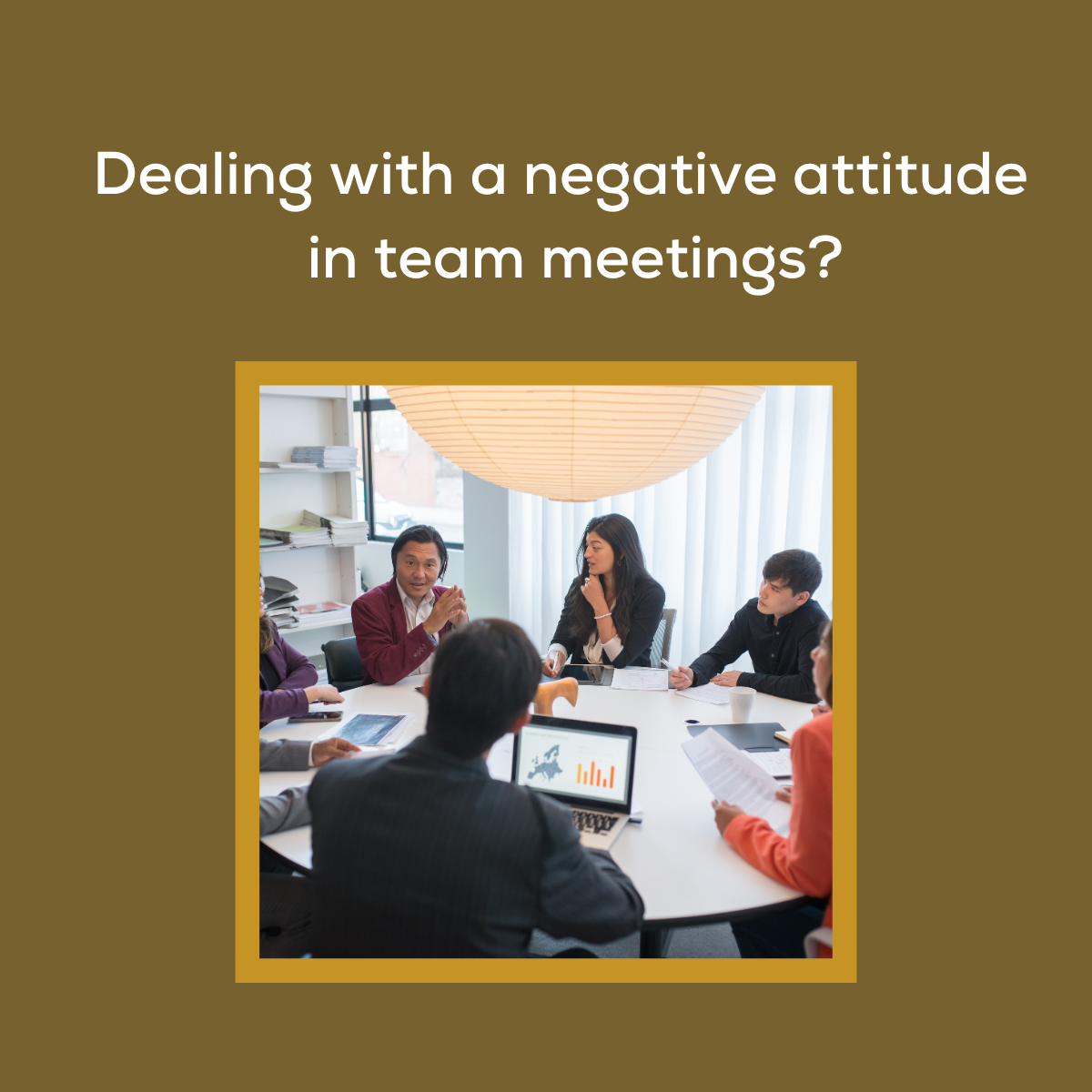
“I love working with my team, except…
There is one person that sucks the energy out of the room in every meeting.”
You would like to get them off your team, but they are not all bad. They produce decent work, and you don’t really have a specific reason to let them go.
I have wrestled with this same dynamic. I was a Team Leader of a talented group of people. Each Team Member was a subject matter expert, and we needed each talent to conduct our projects. It has been measured and well documented that teams that have a variety of skills, experience, backgrounds, and genders consistently outperform homogeneous teams. The Team I am referring to was as diverse as they come!
But we were often stuck, and behind on our projected milestones.
When the Team came together, there was one person who sat ridged and expressionless. When I looked around the table and noticed them, my enthusiasm sank. I knew that when I talked about our progress and next steps, …the objections were coming. That person would shift ever so slightly and the tension in the room increased.
There were a variety of ways that person would respond:
- “We can’t do that.”
- “That won’t satisfy the requirements.”
- “The cost is too high.”
- “That will never get approved.”
- “The customer won’t accept it.”
- Etc.
It all added up to the same thing. No matter what everyone brought to the project, that person was going to find the flaws that affected every effort and outcome. I sensed everyone’s shoulders droop, and discouragement rise. One or two people tried to counter, but the person was steadfast in the belief that they were right and knew better than anyone.
Since then, I have collaborated with leaders and countless Team Members as an outside coach, and I know this is a common scenario. It is the reason there are thousands of books and professional development courses dedicated to the topic of working with ‘difficult people’. Back then, I attended a full day workshop that guaranteed to provide insight and strategies to manage my difficult Team Member.
I wish I could say that workshop taught me everything I needed to know to turn this ‘person’ around. But the simple truth is there is no magic trick to fix someone. The tendency to want to ‘straighten them out’, ‘tell them how it’s going to be’, ‘threaten them with a letter on their file’, you might provide momentary satisfaction because you put them in their place… but the relationship and future collaboration is lost.
What I have come to understand, and trust is in the power of sage conversations. A sage conversation is where everyone feels heard, understood, and their ideas appreciated, not necessarily agreed with, but appreciated. Navigate a sage conversation by asking questions, without judgement, without expectation. To ask these kinds of questions you must be in a state of curiosity. Opening the conversation with an honest desire to hear the perspective of the other person builds trust; defensiveness is diffused. With trust you can achieve a transparent dialogue about what is right, not who is right.
My problem then was that I went to the Team Meetings expecting this person to be difficult. I was expecting negativity and that I couldn’t do or say anything to change the mood. I believed it was their issue, their hardwired passive aggressive personality type. And because I was stuck in my assessment, we were all stuck.
But there is a way to get unstuck. It is a straightforward way, but it is not always easy. It is straightforward because it is a matter of asking questions with a desire to understand. It is not easy, because we get into a mindset of wanting, even needing, to be right. Our default is to tell, rather than to hear. We need to resist the urge to jump in and explain why we think we are right or have the better strategy.
When everyone feels heard, understood, and appreciated…the team gets unstuck!
